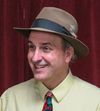Restless Bones
The moving sarcophagus of Thomas Starr King.
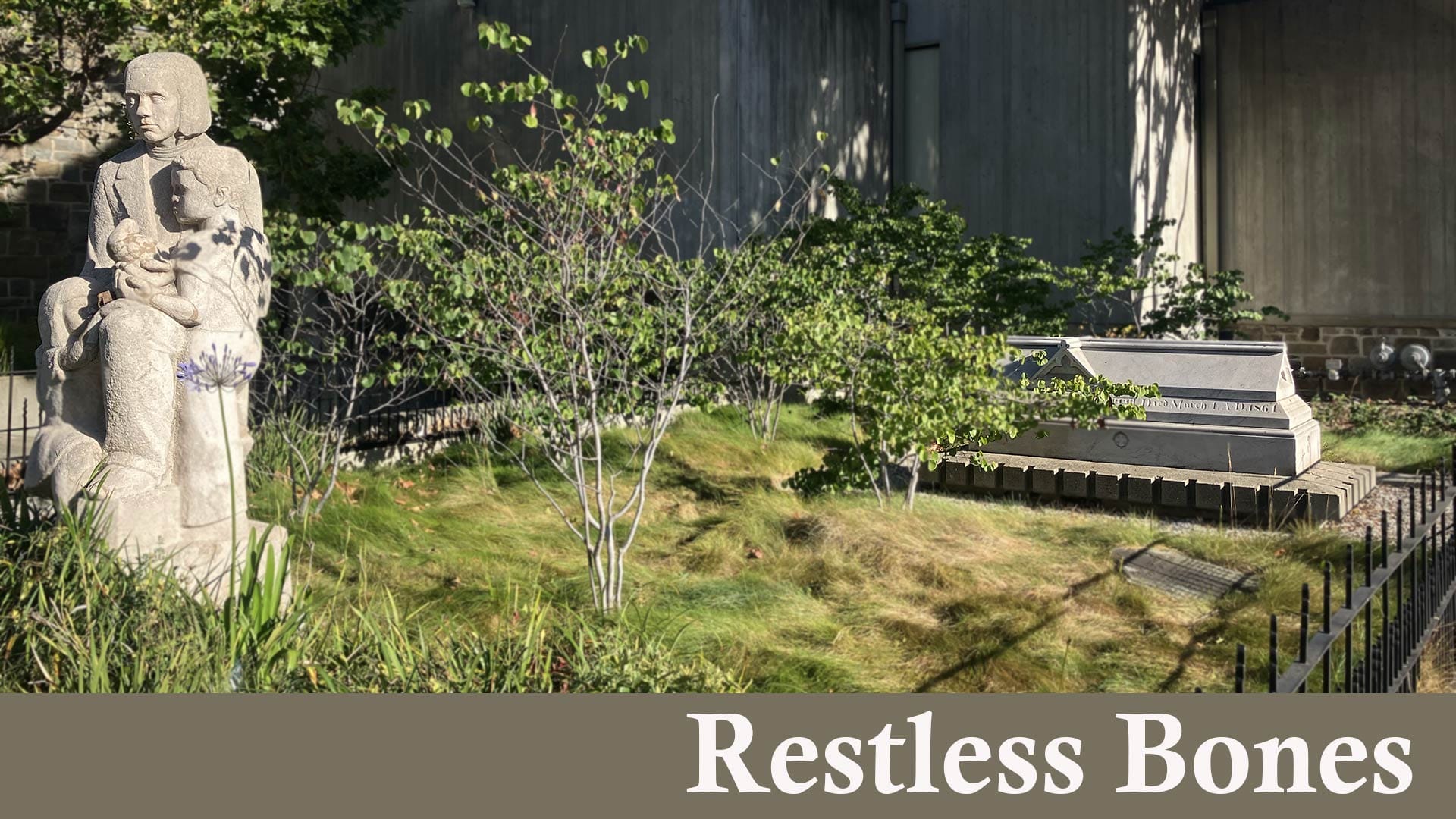
You probably didn’t know it, but on Franklin Street, rushing north to Lombard Street, maybe headed to the Golden Gate Bridge, you have driven past the body of one of the great orators of the mid 19th century.
In my four years in Sacred Heart High School classrooms no one told me that I sat one block from the bones of the man credited with putting California on the side of the Union during the United States Civil War. The short walk would have made the nation’s great struggle a lot more real.
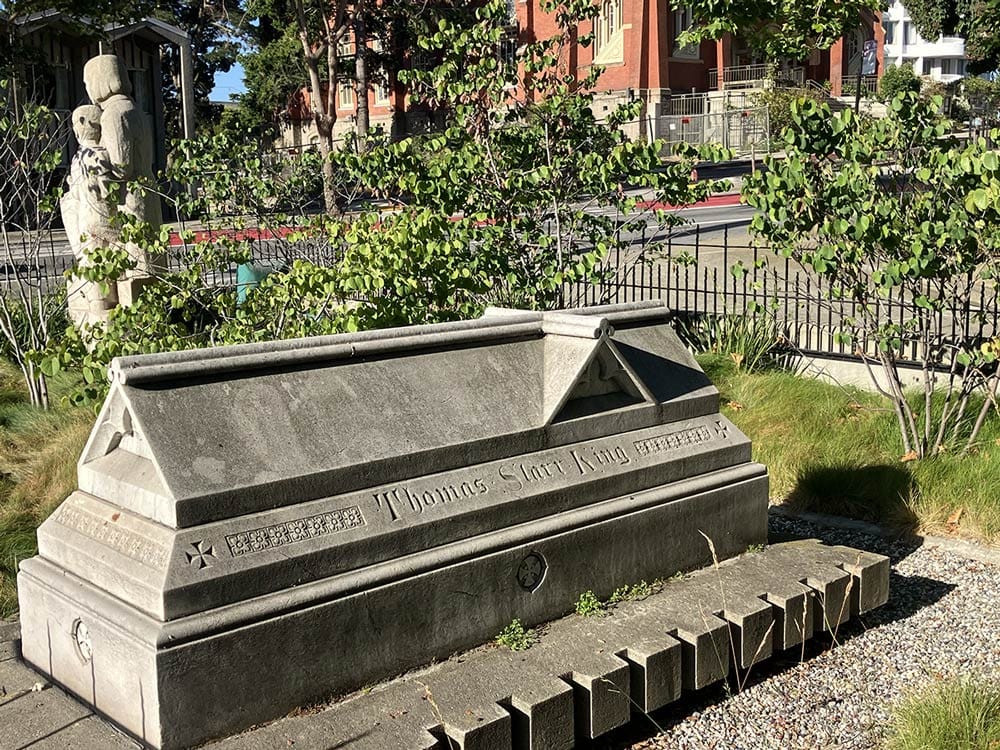
Thomas Starr King was an active man of the cloth. When he was called from Massachusetts in 1860 to be the pastor of San Francisco’s First Unitarian Church, he left an impressive reputation in the east as one of its great speakers. There he had traveled the “lyceum circuit,” made famous by Ralph Waldo Emerson and Henry Ward Beecher, giving talks on reality, insight, and the great tests each individual faces in life.
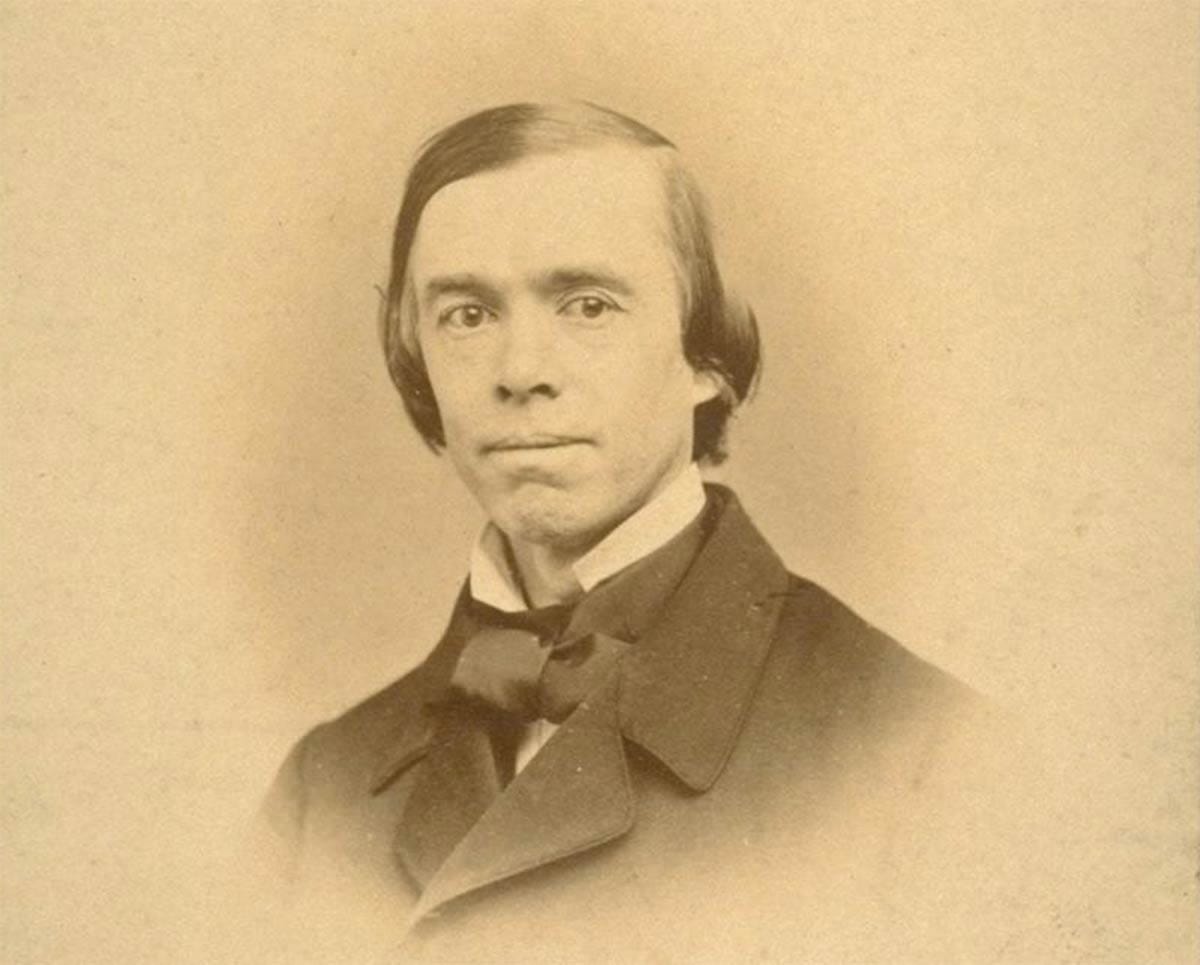
Not content to just meditate on providence or the strange ways of the creator, Starr King was an exhorter, a persuader, a man who used his gifts in service of action and industry and change.
As in life, Starr King couldn’t lie still in death. Moved multiple times, his remains now lies on the bank of a motorway river. Tens of thousands of cars, minivans, motorcycles, trucks, and Muni buses daily pass “the orator who saved the nation.”
Foundation
“Be sure of the foundation of your life. Know why you live as you do. Be ready to give a reason for it. Do not in such a matter build an opinion or custom on what you guess to be the truth. Make it a matter of certainty and science.”
I got my first real job in May 1984, hired as a greeter for Waldenbooks on the south side of Geary Street between Grant and Stockton Streets, right next door to Neiman Marcus. I said hello to everyone who walked into the door and tried not to get nauseous from the all-day smell of roasting nuts wafting from Morrow’s Nut House down the block.
For all those hours and days on Geary Street I was greeting customers right about where the old First Unitarian Church once stood.
This was the church that 35-year-old Thomas Starr King moved his family across the country for in 1860. It was one of several impressive houses of worship that encircled Union Square. (I’ve written about Calvary Church and Temple Emanu-El in past San Francisco Stories.)
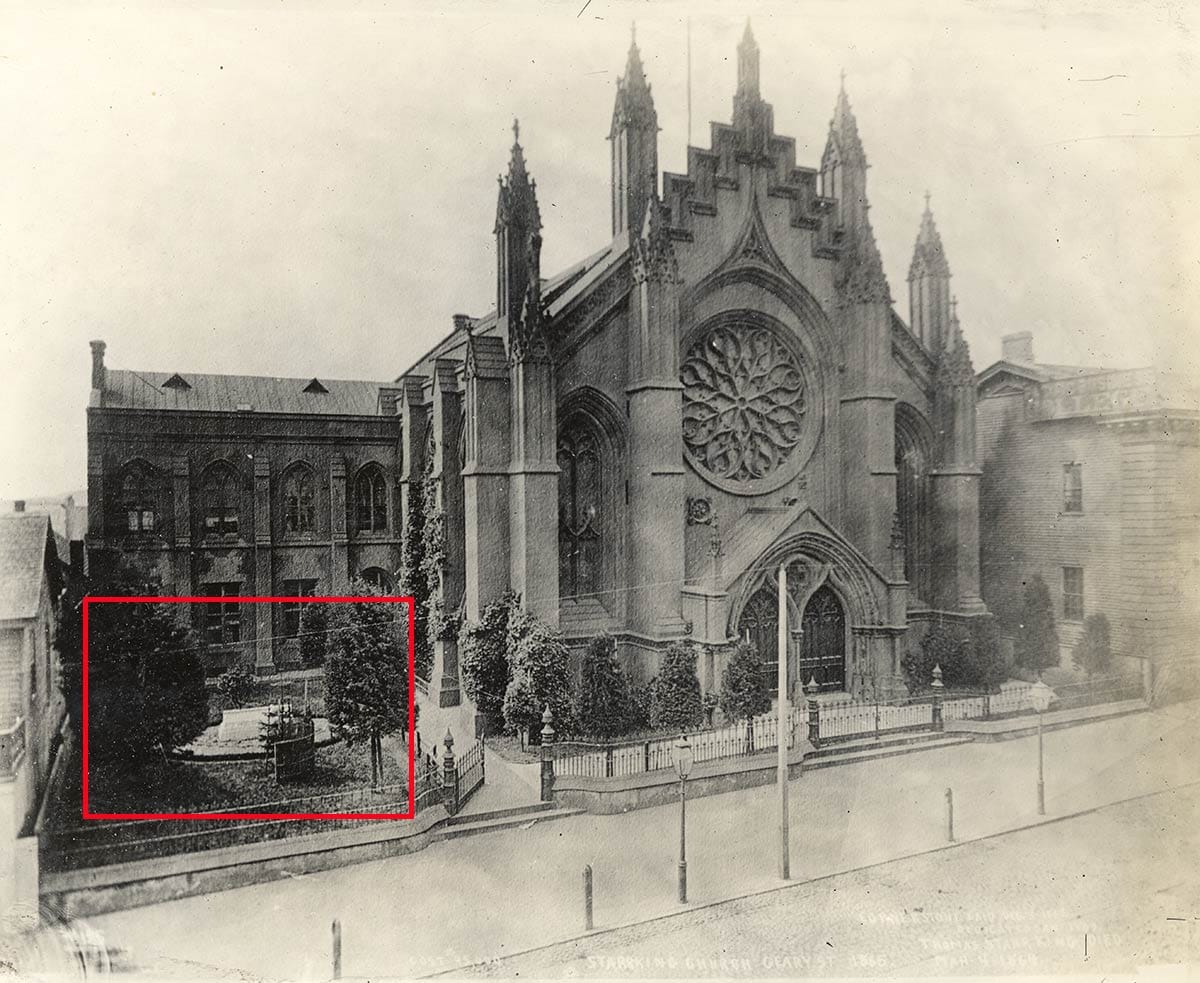
After his arrival, Starr King didn’t take long to make an impression in San Francisco. The United States Civil War began raging in 1861. In distant California, allegiance to the Union side wasn’t a foregone conclusion (although, post-war, many acted as if it was never in doubt.)
There were Southern sympathizers and perhaps just as many who felt that California ought to go its own way as an independent republic. It had been only 15 years since the American conquest, a dozen since the Gold Rush, as close for San Franciscans then as Barack Obama’s inauguration feels for us today.
(Although I will admit that the past decade’s events make 2009 feel like a mythological time.)
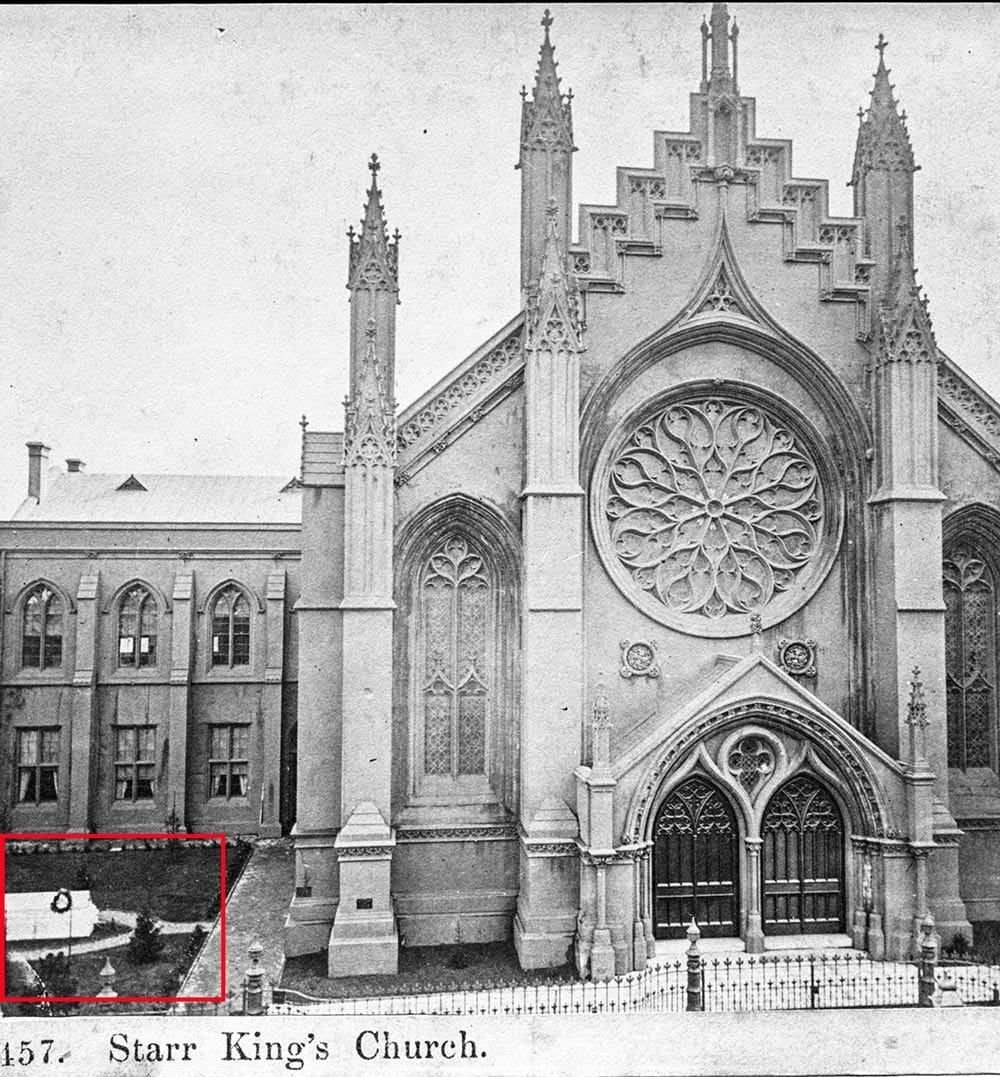
Starr King draped his pulpit with an American flag and stumped for the union. He traveled the state giving speeches and raising money for the United States Sanitary Commission (predecessor of today’s Red Cross). California “went blue” for the first time, aligning itself with the Union, and donating 20% of all the money raised in the country for the care of wounded soldiers.*
The orator wore himself out and died of diphtheria and pneumonia at 39 years old on March 4, 1864, just as the last bloody year of the great conflict began. The Boston Evening Transcript wrote a fulsome remembrance of him:
“His entire soul, all that was in him of intellectual force and fire, of persuasive, convincing or rebuking speech, was dedicated to the cause of the republic, to the saving of its freedom and its nationality. […] Thus striving, he has died, as much of a hero as he would had he fallen leading an army on to victory.”
Starr King’s work and his death just as the war entered its final stages made him a venerated martyr. His speeches and tributes to him were printed (and sold). Hymns were quickly composed in his honor (and the sheet music sold). Lithographs of his portrait were printed (and also sold).
The California legislature adjourned in his honor and passed a resolution calling him “the man whose matchless oratory saved California to the Union.” Flags hung at half-mast everywhere, thousands came to his funeral.
Legacy
Thomas Starr King lived in California for less than four years, but his reputation was such that in the 1930s he was chosen by the state as a representative for one of two statues allowed to be displayed in the national capital. (Junipero Serra was the other.)
He was given the hook in 2009, replaced by a smiling Ronald Reagan. Serra is still the other guy representing the Golden State.
Starr King also had a monument erected in his honor in San Francisco’s Golden Gate Park in 1892. In the great monument attack of Golden Gate Park in 2020—when Junipero Serra was thrown down, Francis Scott Key unseated, and General Grant decapitated—the pastor got a pass.
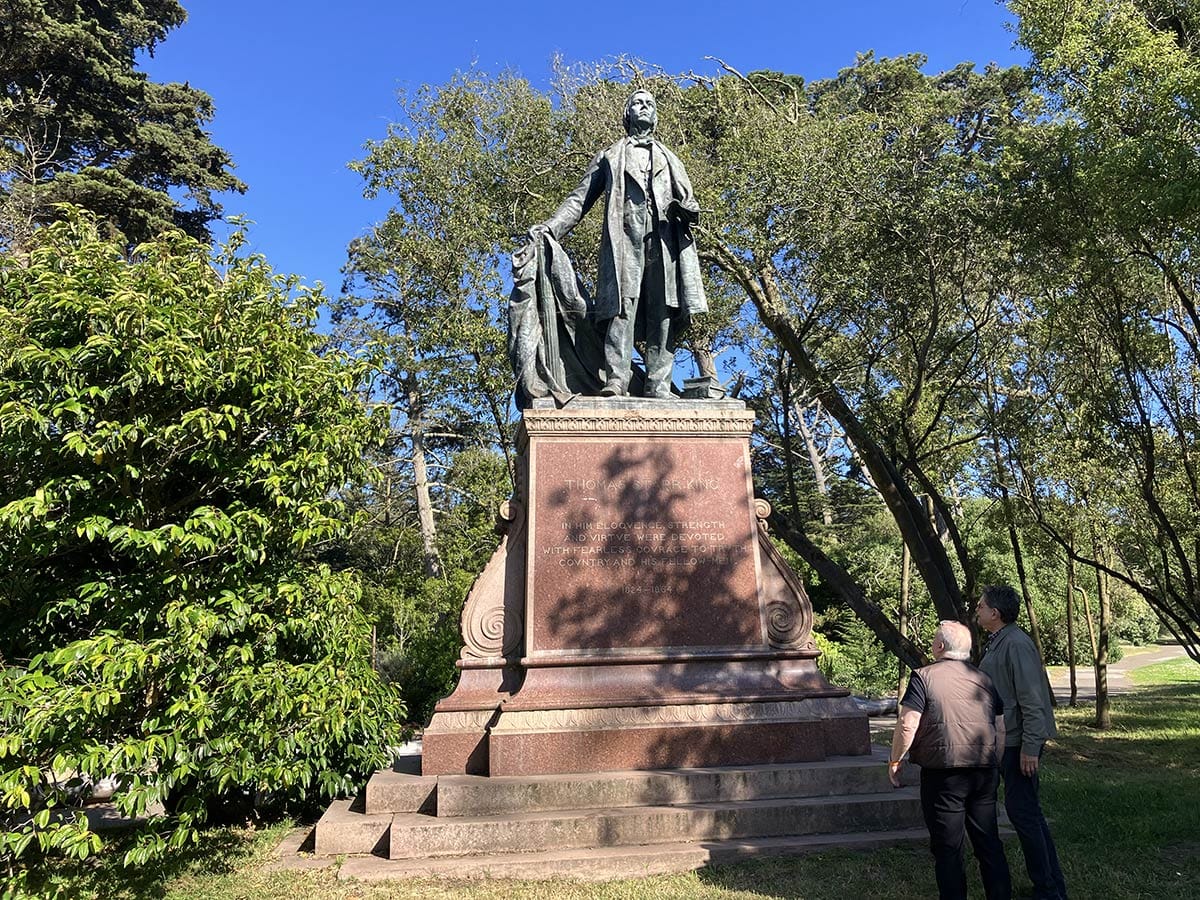
And in the proposed great school-renaming, also in 2020, Starr King Elementary School in Potrero Hill wasn’t put on the list to get changed.
Before all the naming and statues and modern reckonings, those who wanted to remember and honor Thomas Starr King could visit the man himself, or at least his earthly remains.
Restlessness
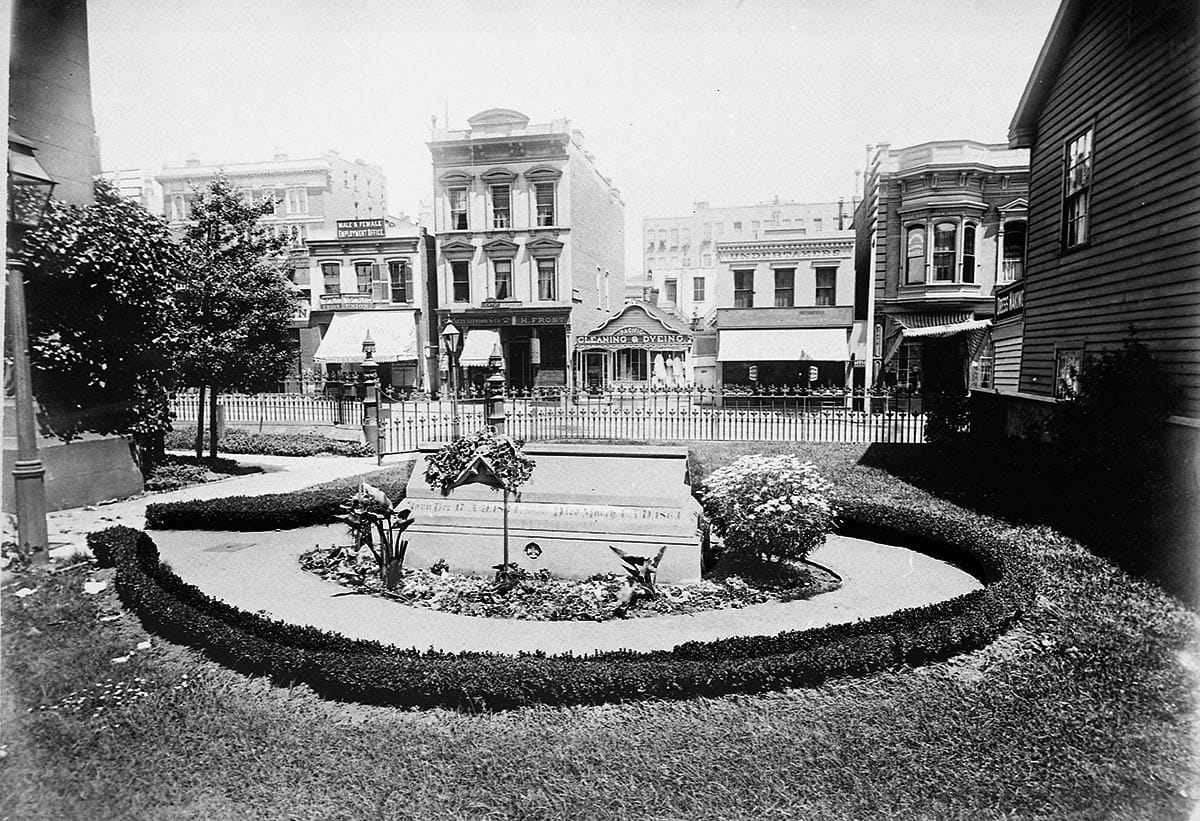
After his funeral in 1864, Thomas Starr King’s body was taken to Lone Mountain Cemetery, but not for its final rest.
In September, his remains were brought back to his church on Geary Street. His coffin was entombed in a sarcophagus of California marble and placed in a memorial garden in the churchyard.
When the congregation decided to move to a new church in a new location on the southwest corner of Geary and Franklin Streets, they planned to take their venerated pastor with them. While the new church was under construction, the sarcophagus was temporarily removed and held at the Masonic Cemetery.
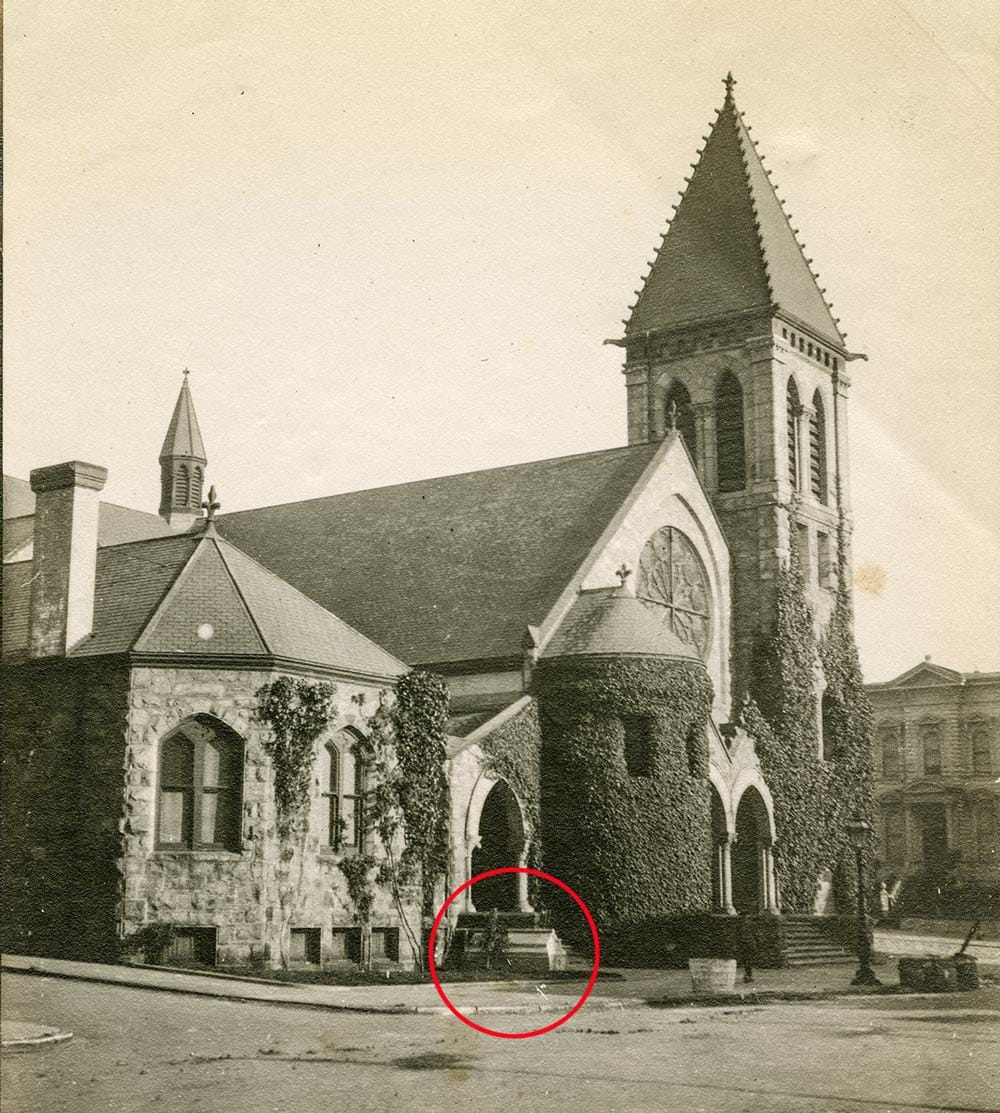
Starr King's remains rejoined his congregation for the dedication of the new church in 1889. Like at First Unitarian downtown, the marble sarcophagus was given a prominent outdoor space for public viewing.
When the church decided to expanded its footprint to the south in 1964, the centennial year of Starr King’s death, it was able to close Myrtle Alley and construct a Unitarian Universalist Center across the full block.
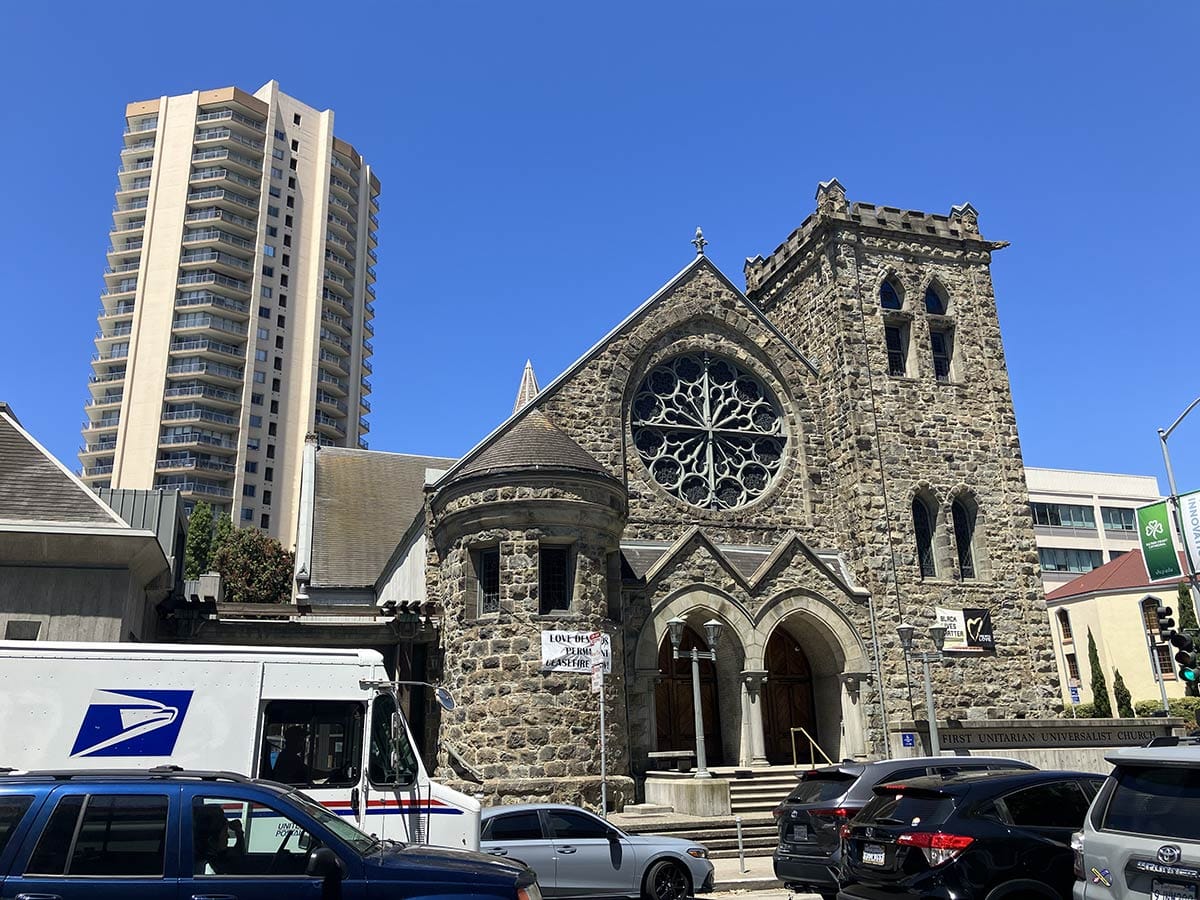
The marble sarcophagus was moved once again. A curving connecting street connecting Geary Boulevard with O’Farrell Street was named in Starr King’s honor and a statue by artist Ruth Cravath installed.
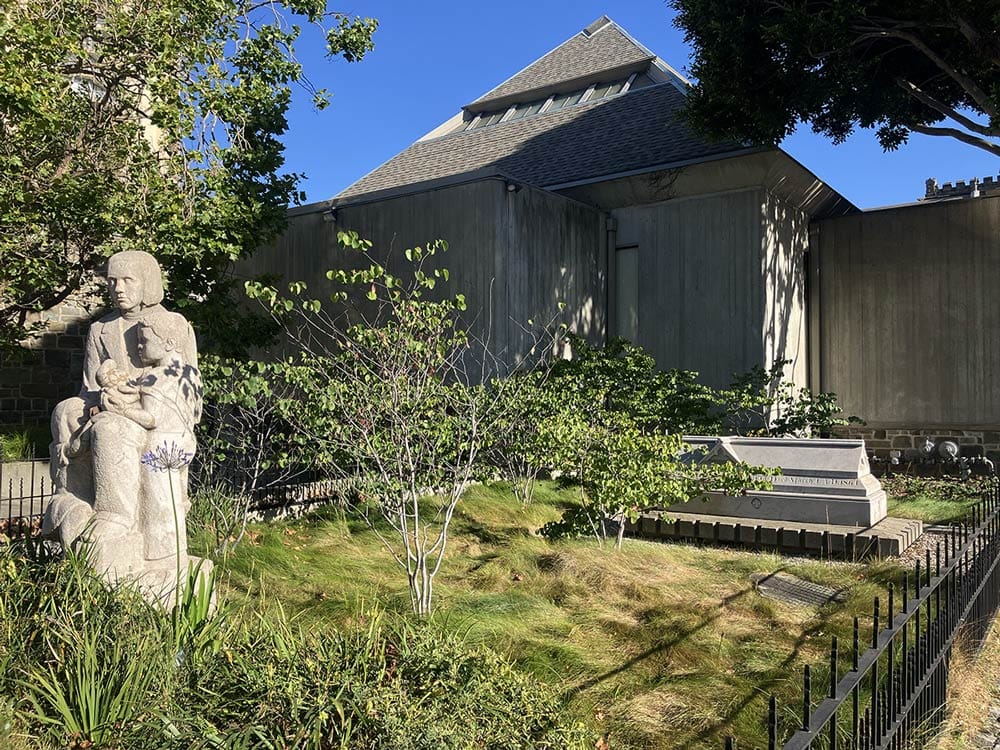
There he has remained for almost 60 years and there, perhaps, he might stay forever.
We’ll see.
* Blue was the Union color, of course. I know “going blue” means allegiance to the Democratic party today and Lincoln was a Republican, but, well, you get what I was going for.
Go West Event on September 5
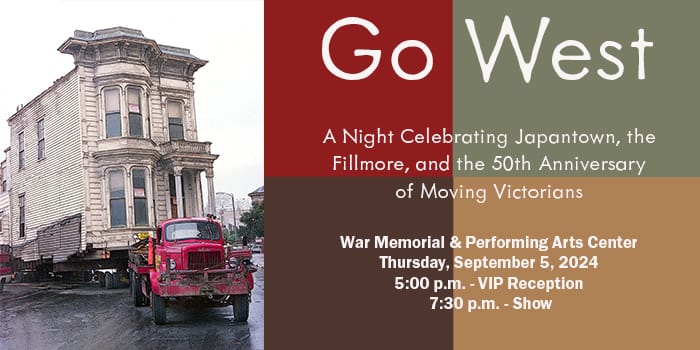
A rare Woody cross-over promotion. The annual fundraiser for the amazing and important nonprofit I lead, San Francisco Heritage, will commemorate the 50th anniversary of our project to move several Victorian buildings of the Western Addition to save them from demolition.
The night will be one of noshing, drinking, and seeing some great old photos and film on Herbst Theater’s big screen. Support SF Heritage, learn about some Western Addition history, meet some vital organizations doing important work in the neighborhood, and have fun with me!
Here are the deets (as the kids say.)
The event is Thursday night, September 5, 2024. Individual sponsorships are $250 and if you have a business or organization you'd like to get some exposure for, there are levels with some bonus benefits.
And, hey, if you can’t come maybe you can kick a donation in to secure a space for a community partner to attend? (Just scroll to bottom of this page.)
Woody Beer and Coffee Fund

Great thanks to Steve C. (F.O.W.) for making sure the Woody Beer and Coffee Fund is topped off. Is it your turn to chip in or to have a beverage with me? Let me know when you are free!
Sources
“The Rev. Thomas Starr King,” Daily Alta California [Reprinting article from the Boston Evening Transcript], April 11, 1864, pg. 4.
“Entombed,” Sacramento Daily Union, September 26, 1864, pg. 2.
The First Unitarian Universalist Society of San Francisco: An Architectural Tour and History (printed in 2015)

